You are here
Petroglyphs of Kokentau mountains.
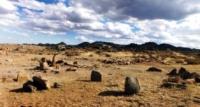
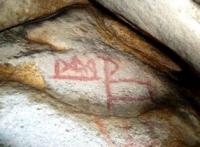
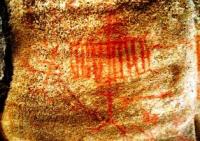
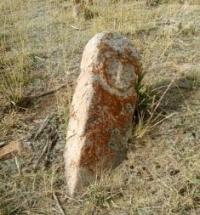
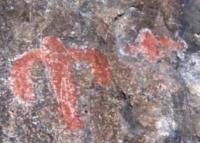
Beach holiday on the Alakol lake Kazakhstan.
“The world is a book and those who do not travel read only one page”
Augustine of Hippo.
Favourite stays in Kazakhstan.
By search and photographings of archaeological monuments in Semey Priirtyshje by local historians it is revealed and lifted from the Earth's surface many finds in the form of stone scrapers, stone plates, silicon tips of arrows and fragments of the broken ceramic ware, occasionally - the coins relating to different eras: pre-revolutionary Russian, Chinese - times of a Manchurian dynasty Qing and Soviet.
The brand of Kuznetsov factory, the Chinese hieroglyphs and the image of the pre-war Soviet coat of arms on a collum of some broken cups indicate an origin of these products. Mattocks, mealing stone, fragments of millstones of manual mills and other instruments of labor which were made by our ancestors meet sometimes.
In the foothills and mountain valleys sepulchral barrows are located, it is possible to find the figures of living beings cut on a surface of stones and schematic images of some objects in some mountain areas. The area where there are rock paintings executed by red ochre is called the Kokentau massif.
In the mountain valleys located to the North from the majestic three-headed mountain Ush-ayyr (the literal translation "Divided into three tops"), there are ancient Turkic barrows with four sepulchral sculptures, the bases of former structures, the old cemetery, stone instruments of labor and splinters which appeared during their production, fragments of ceramic ware, fragments of pig-iron coppers and other material traces of dwelling of people in these picturesque places.
Throughout more than a kilometer the remains of the bases of ancient dwellings indicating that during the millennia people lived and continue to live here are found. Presently in different places close to the massif winterings of country farms are located.
Archaeological material is characterized by a big variety: among them there is a lot of stone scrapers, silicon and bronze tips of arrows, pottery fragments, and also metal details of different objects and splinters of faience ware of modern times.
In northern mountains of the Kokentausky massif there is a bronze era necropolis. Burials confirmed their high antiquity: above the ground the upper edges of stone plates of sepulchral boxes with ashes of people, creators of Andronian culture acted.
The stone bases of ancient structures, vertically established massive stones and sepulchral barrows remain eternal monuments to antecedents. To the North from the three-headed mountain is in rocky tops several grottoes formed as a result of destruction of granite breed.
In seven of them ancient inhabitants of Koken-Tau drew petroglyphs which degree of safety is caused not only by time of their emergence, but also the location protected from influence of natural factors. On stones of the first of the found grottoes it is possible to see faded, places difficult distinguishable images of deities or spirits in the form of schematically drawn figures of the people standing in a row, couples or separately; silhouette of a sacrificial horse; rectangles and some indistinct forms.
Once tried to update images of two anthropomorphous beings - it is visible on the put layer of mineral paint over the former lines forming figures. There is drawing of an elk, differing on the dark lilac color from other petroglyphs.
Perhaps, this image of the constellation of Big Dipper, four bright stars forming a trapeze represented indigenous people of Siberia as a leg of the huge elk who is eternally running on the sky. In the ethnographic literature devoted to culture of indigenous people of Siberia messages meet that as one of the spirits connected with the shaman mother an animal which quite often acts in an image of an elk appears.
Still not clear is a value of the planimetric drawing reminding the opened post envelope.
This schematic image of a residential or ritual building in the form of a tent is possible. Character of drawings, there are all bases to assume that the platform located at the bottom of a grotto far back in the past represented the special place for commission of sacrifices and the shaman's performance.
Here, in a bottom, at the made fire, in a circle of relatives he presented to different deities and spirits to patrons of the horses devoted to them or other animals, called by means of a tambourine or other tool of hidden assistants, from here his soul made a hard way to mythical areas: on different levels of the sky or in an underground kingdom.
It should be noted that on the northwest coast of the lake Zhasybay the schematic figures of people similar to that executed by red ochre which remained in the first Kokentau grotto were found in the Pavlodar region under a rocky canopy.
There is an assumption that emergence of such drawings is connected with development in the Neolithic era of a shaman cult. Later the sacrifice to happen not only at sacred grottoes to drawings of deities and spirits, but also in other places.
Over time small galleries of rock drawings were replaced with portable set of the drawings located on the skin tense on a rim of a shaman tambourine. Old compositions were transformed to the scheme reflecting the heavenly, average and lower worlds in which soul of the shamanistic ritual was capable to move.
The anthropomorphous figures standing in a row, number seven, sometimes nine quite often occur among the drawings applied on a skin of the tambourines with the Siberian shamans.
Authority and photos:
Iliuf H. Sh. Regional local history museum Semey.






